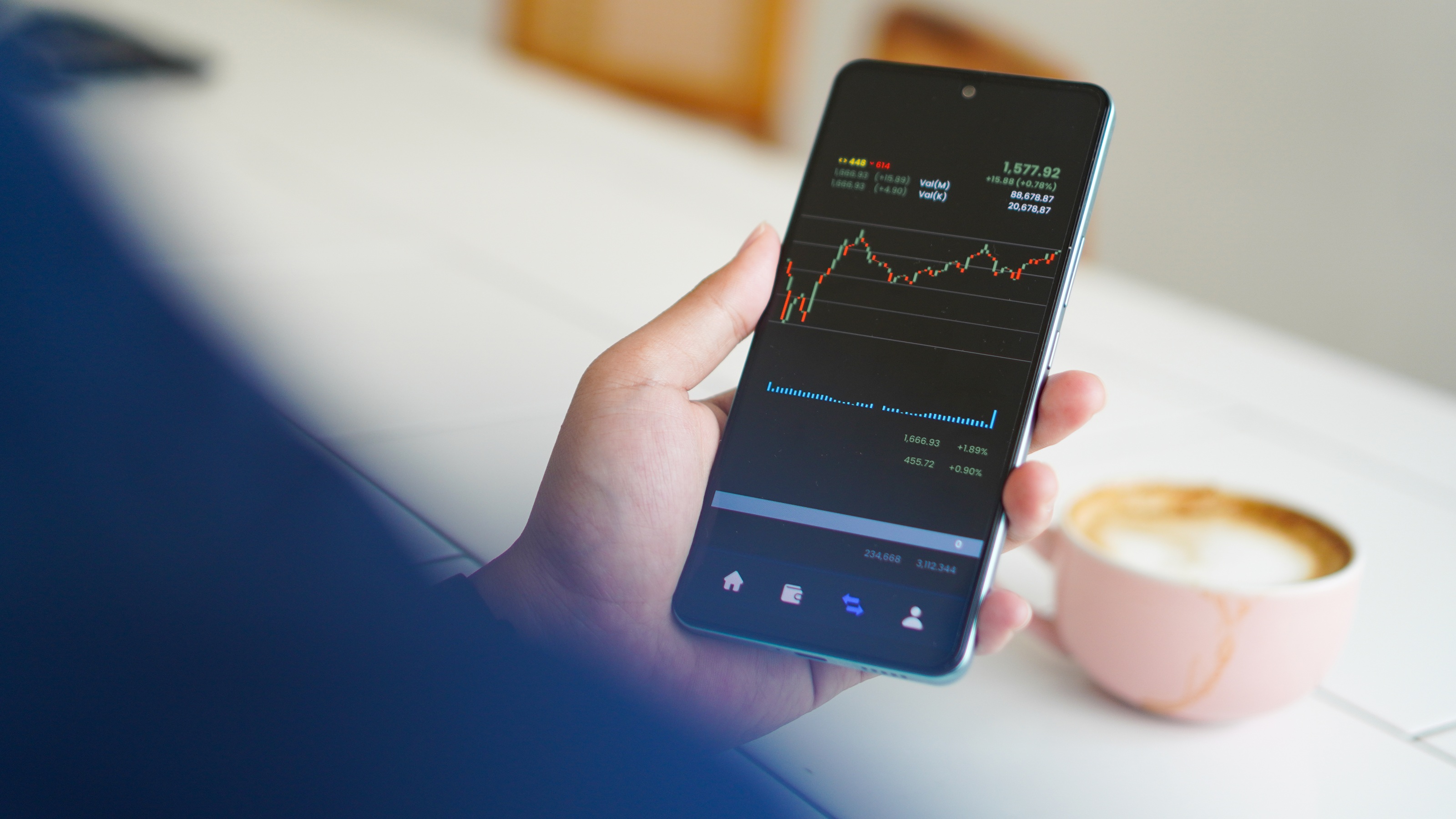Q2 2025 Post-Mortem: Rebound, Risks and Generational Shifts
As the third quarter gets underway, here are some takeaways from the market's second-quarter performance to consider as you make investment decisions.


The first half of 2025 is in the books, and the second quarter delivered a roller coaster for investors watching their retirement and investment accounts.
After Q1's steepest S&P 500 loss in over three years, stocks roared back, global markets flexed, and tectonic shifts, like America's debt concerns, stirred new challenges.
Here's what happened and what it means for you.
From just $107.88 $24.99 for Kiplinger Personal Finance
Become a smarter, better informed investor. Subscribe from just $107.88 $24.99, plus get up to 4 Special Issues

Sign up for Kiplinger’s Free Newsletters
Profit and prosper with the best of expert advice on investing, taxes, retirement, personal finance and more - straight to your e-mail.
Profit and prosper with the best of expert advice - straight to your e-mail.
S&P 500's big bounce
"Buy the dip" was back in force in Q2. U.S. equity markets staged a stunning rebound, climbing back from the sell-off in March and early April and closing the quarter at all-time highs.
The Kiplinger Building Wealth program handpicks financial advisers and business owners from around the world to share retirement, estate planning and tax strategies to preserve and grow your wealth. These experts, who never pay for inclusion on the site, include professional wealth managers, fiduciary financial planners, CPAs and lawyers. Most of them have certifications including CFP®, ChFC®, IAR, AIF®, CDFA® and more, and their stellar records can be checked through the SEC or FINRA.
Meanwhile, market volatility, as measured by the VIX, saw one of its largest collapses ever. The S&P 500 and Nasdaq were strong, jumping above their 200-day moving averages, but the smaller-cap and value stocks lagged.
Valuations still raise eyebrows. S&P's forward P/E ratio sits at 23x, with an earnings yield (reciprocal of the P/E) at 4.3%, roughly matching 10-year Treasury yields.
The Buffett Indicator (market cap/GDP) is now over 200%, signaling U.S. stocks are on the pricey end of history.
Goldman Sachs projects a meager 3% annualized S&P return through 2034 (range of -1 percentage point to 7 percentage points), far below historical norms.
Compare that to global markets: Non-U.S. stocks trade at about 14x, emerging markets at about 12x. Valuations aren't great for short-term market timing but are better indicators for long-term returns; high P/Es often mean a leaner decade ahead.
The question is, are we witnessing a major topping pattern or will there be a convincing breakout to all-time highs.
Global markets shine
While U.S. stocks had outperformed international markets for over a decade and a half, by far the longest run of outperformance in history, this year's stark reversal marks a shift.
International markets, as measured by the MSCI All World Ex. USA Index, are outpacing the U.S. at a pace not seen since 2002.
This is boosted by a dollar drop of about 10% in H1 2025, which is the worst start to a year since the end of the gold-backed era over 50 years ago. The euro is hitting multiyear highs.
The U.S. holds more than 60% of global market cap (stock market value) but just 26% of GDP with 4% of the population, an impressive feat, but is it sustainable?
Home bias — overweighting your country's stocks because you live here — might cost you. Diversifying globally could add to returns.
Bonds wobble
U.S. bonds are still in a very long drawdown as rates have risen in recent years. The 30-year yield jumped above 5% in the quarter after coming back down a bit.
News about President Trump's One Big Beautiful Bill and a 6.7% deficit-to-GDP ratio stoked debt fears, pushing yields up despite Fed rate cut hopes. Interest payments on the debt are about $1 trillion.
Goldman Sachs is forecasting three quarter-point rate cuts through the end of 2025. Long-term rates, less tied to Fed policy, are lifting mortgage and loan costs.
Japan's rates are also rising, but Switzerland's rate cut to zero shows disparities among central banks.
Gold's golden run
Gold surged over $3,300 per ounce, on pace for its best year since 1979, with gold miners riding the wave (up about 47% year-to-date as measured by GDX). Silver is at its highest since 2011.
The rally was fueled by overseas central bank buying, geopolitical tensions and a Fed set to cut rates.
Feeling gold's too hot? Silver, platinum or palladium may offer relative value and are far from all-time highs.
Looking for expert tips to grow and preserve your wealth? Sign up for Building Wealth, our free, twice-weekly newsletter.
Many smaller junior miners, with solid deposits and management teams, have underground per-ounce valuations priced as if gold were much cheaper and could be a bargain for the bold.
Ray Dalio's quip, "If you don't own gold, you know neither history nor economics," rings clear as investors eye alternative stores of value.
Bitcoin recovers
Bitcoin recovered from its steep drop earlier in the year. The overall crypto market sits at $3.3 trillion in value while bitcoin makes up almost two-thirds of that total market share.
Other cryptos are having a tough time keeping pace.
Meanwhile, warnings have come out that quantum computing could pose a serious risk to bitcoin per a Google research paper.
Stagflation's rising tide
Recession risks eased, but stagflation fears grew. The Fed, at its recent June meeting, revised 2025 U.S. economic growth down to 1.4% (from 1.7%) and reduced 2026 to 1.6% (from 1.8%).
Meanwhile, core inflation (prices excluding food and energy) was 2.8% for the 12 months ending in May.
Housing and sentiment
Housing affordability continues to tank. The widening gap between prices and incomes has created an affordability crisis not seen in years.
The gap between sale and list prices hit record highs. The supply of new homes on the market in May was at its highest level since 2022.
Wanting to buy? Time may be on your side.
What's next?
Q2's volatility — tariffs, debates about the debt, geopolitics — sets a complex stage for Q3. The Fed's tightrope walk, trade talks and Congress's One Big Beautiful Bill Act cast long shadows.
Seasonally, while trends vary, July often does well, but August and September are known for being weaker months.
As I wrote here in Q1, "the old playbook might not cut it."
What can you do?
Here are some actionable steps to consider:
- Diversify globally. U.S. valuations urge caution — explore non-U.S. or emerging markets
- Eye precious metal assets. Gold's soaring, but silver or junior miners may hold more value
- Bond caution. Rising yields? Short-term bonds could hedge
- Stay nimble. Volatility persists — track tariffs, Fed shifts and sentiment swings
Markets don't rest — nor should you. Stay close for Q3's twists.
Related Content
- What to Do and What Not to Do When Markets Get Turbulent
- Markets Are Volatile: Here's How Your Estate Can Benefit
- Fortune Favors the Gold: A Little-Known Game-Changing Investing Strategy
- Four Historical Patterns in the Markets for Investors to Know
Profit and prosper with the best of Kiplinger's advice on investing, taxes, retirement, personal finance and much more. Delivered daily. Enter your email in the box and click Sign Me Up.

In 2010, Prem Patel founded GreenRock Advisory, an independent firm within the Schwab Advisor Network, serving affluent clients nationwide. As a registered investment adviser and fiduciary, Prem enjoys forging lifelong relationships with clients, delivering personalized, unbiased guidance to help them achieve their financial goals. With 30 years of personal investment experience, he draws on his Series 65 license, MBA from The Ohio State University Fisher College of Business — specializing in investments, finance and economics — and deep study of financial history to sharpen his market insight.
-
 What to Do If You Plan to Make Catch-Up Contributions in 2026
What to Do If You Plan to Make Catch-Up Contributions in 2026Under new rules, you may lose an up-front deduction but gain tax-free income once you retire.
-
 If You'd Put $1,000 Into Lowe's Stock 20 Years Ago, Here's What You'd Have Today
If You'd Put $1,000 Into Lowe's Stock 20 Years Ago, Here's What You'd Have TodayLowe's stock has delivered disappointing returns recently, but it's been a great holding for truly patient investors.
-
 How to Max Out Your 401(k) in 2026 (New Limits are Higher)
How to Max Out Your 401(k) in 2026 (New Limits are Higher)In 2026, the maximum contribution limits for 401(k) plans have increased, giving you an excellent shot at maximizing your retirement savings.
-
 What to Do If You Plan to Make Catch-Up Contributions in 2026
What to Do If You Plan to Make Catch-Up Contributions in 2026Under new rules, you may lose an up-front deduction but gain tax-free income once you retire.
-
 If You'd Put $1,000 Into Lowe's Stock 20 Years Ago, Here's What You'd Have Today
If You'd Put $1,000 Into Lowe's Stock 20 Years Ago, Here's What You'd Have TodayLowe's stock has delivered disappointing returns recently, but it's been a great holding for truly patient investors.
-
 How to Max Out Your 401(k) in 2026 (New Limits are Higher)
How to Max Out Your 401(k) in 2026 (New Limits are Higher)In 2026, the maximum contribution limits for 401(k) plans have increased, giving you an excellent shot at maximizing your retirement savings.
-
 Don't Trade After-Hours Without Reading This
Don't Trade After-Hours Without Reading ThisAre you a night owl or an early bird with a yen for active trading? Before you transact after-hours, consider these tips and potential traps.
-
 8 Practical Ways to Declutter Your Life in 2026: A Retirement 'Non-Resolution' Checklist
8 Practical Ways to Declutter Your Life in 2026: A Retirement 'Non-Resolution' ChecklistHere's how to stop wasting your energy on things that don't enhance your new chapter and focus on the things that do.
-
 To Retire Rich, Stop Chasing Huge Returns and Do This Instead, Courtesy of a Financial Planner
To Retire Rich, Stop Chasing Huge Returns and Do This Instead, Courtesy of a Financial PlannerSaving a large percentage of your income, minimizing taxes and keeping spending in check can offer a more realistic path to retiring rich.
-
 New Year, New Retirement Rules: Here's How You Can Keep Up as the Landscape Changes
New Year, New Retirement Rules: Here's How You Can Keep Up as the Landscape ChangesFor a successful modern retirement, prepare for a longer life, manage high health care costs and prioritize your social life and purpose.
-
 Stocks End Volatile Year on a Down Note: Stock Market Today
Stocks End Volatile Year on a Down Note: Stock Market TodayAfter nearing bear-market territory in the spring, the main market indexes closed out the year with impressive gains.